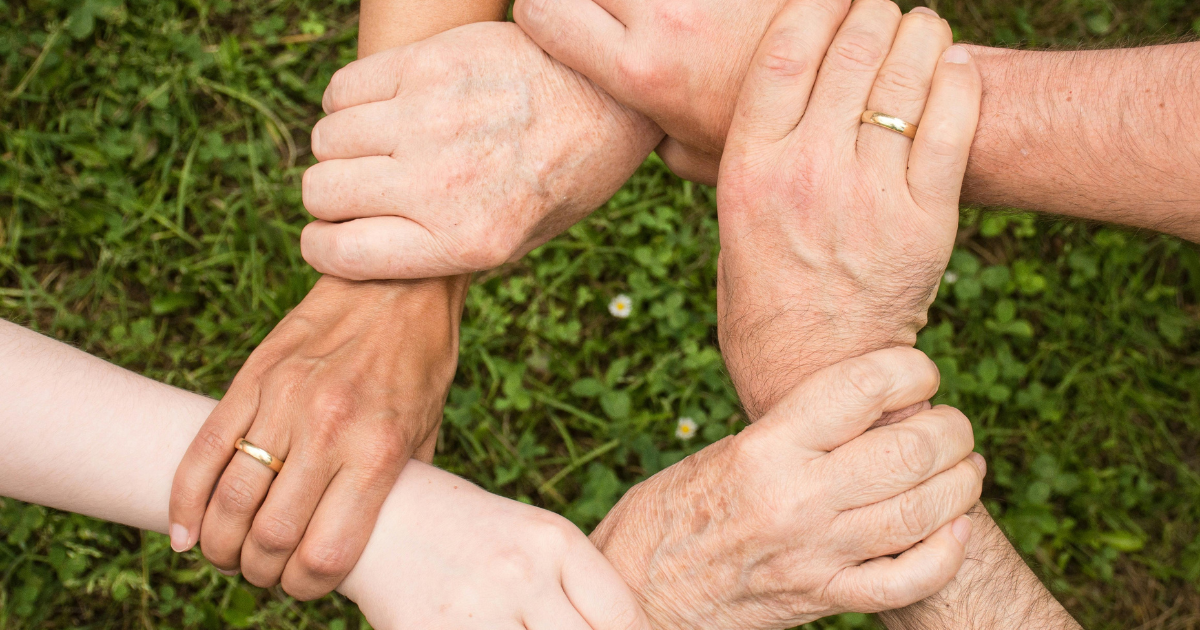Therapeutic interventions, in a way, are kind of like a therapist’s toolkit. Just like a carpenter reaches for a chisel or a mechanic grabs the right wrench, mental health professionals turn to different interventions depending on what the person in front of them needs.
Therapy isn’t one-size-fits-all. What works wonders for one person might not do much for another. That’s why knowing the different kinds of therapeutic tools and when to use them really matters.
This article will walk through the main types of therapeutic interventions, why these approaches matter, and how they show up in real therapy sessions.
What Are Therapeutic Interventions?
The term “therapeutic intervention” pops up in different fields, and because of this, its meaning shifts a little depending on the context. But when we’re talking about mental health, here’s what we mean:
A therapeutic intervention is basically a planned, structured approach that mental health professionals use to help someone heal, grow, or change something in their life. It could be a tool to help them cope better, understand their emotions, or push through a tough experience.
These methods aren’t random. They’re chosen carefully, with the person’s background, struggles, and goals in mind. Some interventions are super targeted and short-term, while others might be part of a months-long process.
It’s not all talk, either. Some of these methods get you moving. Or drawing. Or just breathing and checking in with yourself. The beauty of it all is that therapy isn’t a one-way street. It adapts to what the client needs most.

Mental Health Center of San Diego
Why Therapeutic Interventions Matter in the Healing Process
Let’s be honest, healing is rarely a straight line. And when someone’s dealing with emotional pain or mental health challenges, just “talking it out” sometimes isn’t enough.
Therapeutic interventions offer a path. A structure. They guide people toward understanding, change, and growth, even when things feel foggy.
Here’s why they matter:
- They give you tools to handle emotional pain
- They can help reframe the way you think about yourself and the world
- They create a space where it’s safe to be honest
- They help you grow at your own pace
- They can point you toward what actually helps you
Common Types of Therapeutic Interventions
Humans are wired differently. Some people are talkers. Others need action. And that’s why therapists don’t just stick to one approach.
While there are a lot of therapy interventions out there, most of them fall into a few big categories. Let’s take a look at this list of therapeutic interventions:
- Cognitive-Based Interventions
If therapy had a “most popular” category, this would be it. Cognitive-Based Therapies (CBT) are based on the theory that your thoughts, feelings, and actions are all connected. If you can find a way to shift one and make it positive, the others can follow.
This umbrella covers a few styles:
- Classic CBT – works well for anxiety, depression, and overthinking patterns
- Exposure therapy or behavior hacks – great for habits or fears
- Skill-building – like teaching impulse control or social skills
- TF-CBT – focuses on healing trauma in a safe, structured way
- EMDR – eye movement techniques that help many people manage trauma
- Behavioral and Skill-Based Interventions
This type of therapy intervention is super hands-on. They include practical steps you can take to change how your life feels day to day. Instead of digging deep into your past or overanalyzing your emotions, it zooms in on what you’re actually doing. This includes your habits, your reactions, the way you handle stuff when things get tough.
The core idea is pretty simple: some habits just don’t serve you. They might be making things harder than they need to be. So, if you can spot those patterns and swap them out for better ones? That alone can shift how you feel emotionally and mentally. It might be learning how to set better boundaries, figuring out why you always procrastinate, or finding a healthier way to respond when you’re overwhelmed.
Here’s a mix of common techniques used in this approach:
- Habit tracking – Helps you notice patterns (good and bad), and build routines that make your days smoother
- Role-playing – Practicing tough conversations or boundary-setting so you’re not caught off guard in real life
- Stress management tools – From deep breathing to grounding, these help you stay calm when life gets chaotic
- Communication training – If you struggle to say what you mean clearly, this builds those skills step by step
- DBT skills – Short for Dialectical Behavior Therapy, this focuses on managing emotions, especially when things get intense
- Anger management – Not just “don’t get mad,” but learning how to pause, process, and choose your response
- Time and organization strategies – Helps if you constantly feel behind or overwhelmed by your to-do list
- Social skills coaching – Really helpful if anxiety or shyness keeps you from connecting with people the way you’d like to
In short? This approach is about giving you tools to deal with the real world more effectively.
- Holistic and Creative Interventions
Okay, so not everyone wants to just sit on a couch and talk. For a lot of people, especially those who’ve hit walls with more traditional therapy, holistic or creative methods open up something different. This therapy looks at you as a whole, not just your thoughts, but also your body, emotions, habits, and even your space.

These interventions tend to be more fluid, more sensory, and honestly, a lot more expressive. They’re great for people who process emotions through movement, sound, color, or even just silence. It’s therapy, but it feels more like experiencing than explaining.
You might like this route if:
- You find it hard to put feelings into words
- You feel stuck in your body or disconnected from yourself
- You’re overwhelmed by stress or trauma, and talking alone hasn’t shifted
Here are some well-loved holistic and creative therapy tools:
- Art therapy – Whether it’s painting, scribbling, or just playing with color, it helps you express what’s hard to say
- Music therapy – Listening to, writing, or creating music can unlock memories, emotions, and calm
- Movement therapy – This incorporates stretching and yoga
- Mindfulness/meditation – Helps calm racing thoughts and brings your attention to what’s happening right now
- Animal or nature therapy – Spending time with animals or in green spaces has a grounding, healing effect
- Journaling or expressive writing – A low-pressure way to get your feelings out, sort through confusion, or reflect
- Aromatherapy – Using certain smells (lavender, peppermint, etc.) to help regulate your mood or energy level
These methods help you feel seen, soothed, and more yourself. These methods are more creative, and they give you more freedom in how you heal.
Intervention and Effectiveness Example in Theory
| Category | Sample Methods | Best for |
| Cognitive-Behavioral Therapy (CBT) | Thought journaling, reframing negative thoughts, goal setting | Anxiety, depression, trauma, and negative thinking |
| Behavioral and Skill-Based | Role-playing, habit-building exercises, DBT techniques, time management | Learning coping skills, breaking bad habits, daily routines, emotional control |
| Holistic & Creative | Art therapy, music therapy, mindfulness, yoga, journaling, nature therapy | Trauma, stress, burnout, emotional expression, non-verbal healing, personal growth |
Mental Health Center of San Diego
How to Measure the Effectiveness of Therapy Interventions
Just because someone is going to therapy doesn’t automatically mean it’s working. Like anything else that’s supposed to help, you have to check in and see if it’s actually doing the job. So, how can we tell?
Therapists don’t just go with their gut. Most of the time, they use standardized tools, like rating scales or symptom checklists. Clients might fill out a quick survey every few weeks that asks details like “How has your mood been?” or “Any panic attacks this week?” That helps track change over time. But not everything that matters can be measured in numbers.
A lot of progress shows up in everyday life. A client might say something like, “I handled that conversation way better than I would’ve a month ago,” or “I don’t spiral like I used to.” That kind of growth is huge. So while data helps, real-world shifts matter just as much and sometimes more.
Let’s break down a few key signs that therapy is moving in the right direction:
- You find yourself actually using those new skills outside sessions
- The intense symptoms (like panic, rage, or sadness) start to lose their grip
- You get better at noticing and naming your feelings
- Those personal goals you set at the beginning? You’re checking them off
Take this as an example: say someone’s got a serious fear of crowds. They start therapy and try exposure techniques, slowly going from small gatherings to busier public places. A few months later, they’re going to the movies without breaking into a sweat. That’s a clear win. Progress might be slow, but it’s real and it’s measurable.
Therapy Goals and Matching Interventions
| Therapy Goal | Intervention Types |
| Manage anxiety and negative thoughts | Cognitive behavioral therapy |
| Strengthen parent and child bonds | Relationship-based interventions |
| Improve family dynamics | Systemic Interventions |
| Build self-awareness or resilience | Psychoeducation/Peer monitoring |
| Support emotional growth in kids | Group work/Activity-based |
| Heal from trauma | CBT/Activity-based |
| Cope with general life stress | Counseling/Psychotherapy |
Contact the Mental Health Center of San Diego for Personalized Support
There’s no perfect roadmap when it comes to mental health. Everyone’s journey looks different, and sometimes, finding the right kind of help takes time.
That’s why therapeutic interventions matter so much. But more importantly, that’s why they have to be chosen thoughtfully. A method that helps one person might completely miss the mark for someone else.
At Mental Health Center of San Diego, we don’t just throw tools at the problem and hope something sticks. We work closely with each person, looking at where they’ve been, what they’re going through, and what kind of life they want to build. That’s how we decide which interventions to use.
First time trying therapy? Or maybe you’ve been doing it for a while and feel stuck? Contact Mental Health Center of San Diego. You don’t have to do it alone.
Mental Health Center of San Diego
FAQs
What are the main types of therapeutic interventions used in counseling?
Types of interventions in therapy include: Cognitive Behavioral Therapy (CBT), relationship-focused interventions, systemic/family-based work, activity-based therapies, and educational or support-based models like group therapy and psychoeducation.
How do therapists decide which intervention is right for a client?
It really depends. A therapist looks at what’s going on in your life, your symptoms, and your goals. They’ll usually pick an approach that fits both where you are now and where you want to go.
What’s an example of an intervention and its effectiveness in therapy?
Let’s say someone’s struggling with anxiety. Through CBT, they learn how to spot their anxious thoughts and replace them with more balanced ones. Over time, those thoughts show up less, and they start to feel more in control.
Are certain therapeutic interventions better for specific mental health conditions?
Absolutely. Some methods are tailor-made for specific issues. Like, exposure therapy works great for phobias, while relationship-based work helps with attachment wounds. A good therapist knows when to use what.
Can you combine multiple types of therapy interventions in one treatment plan?
Yes, most good therapies blend different methods. They try to get a mix of what works best for that particular person. This way, they can create a balance and get the best results.









